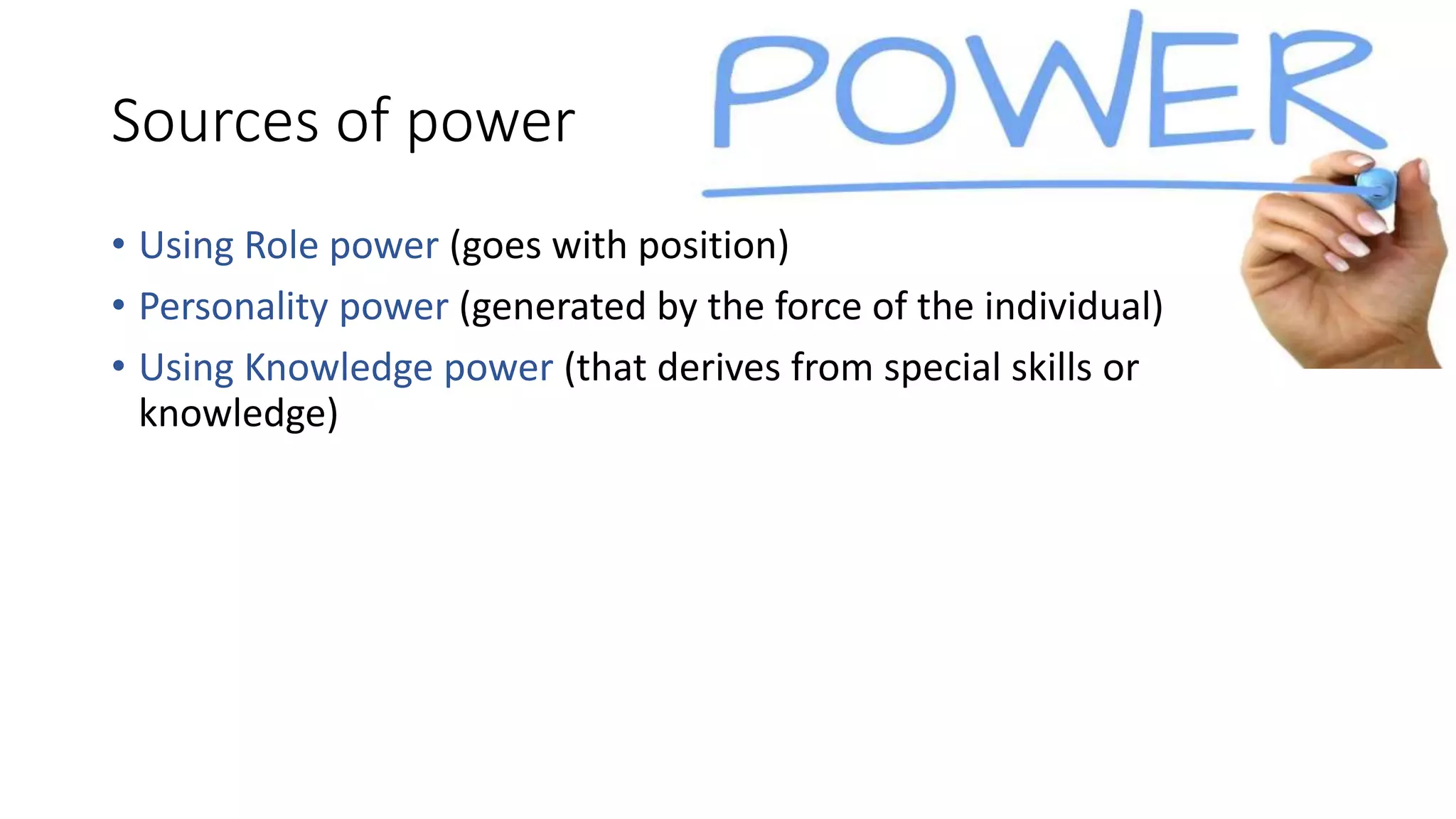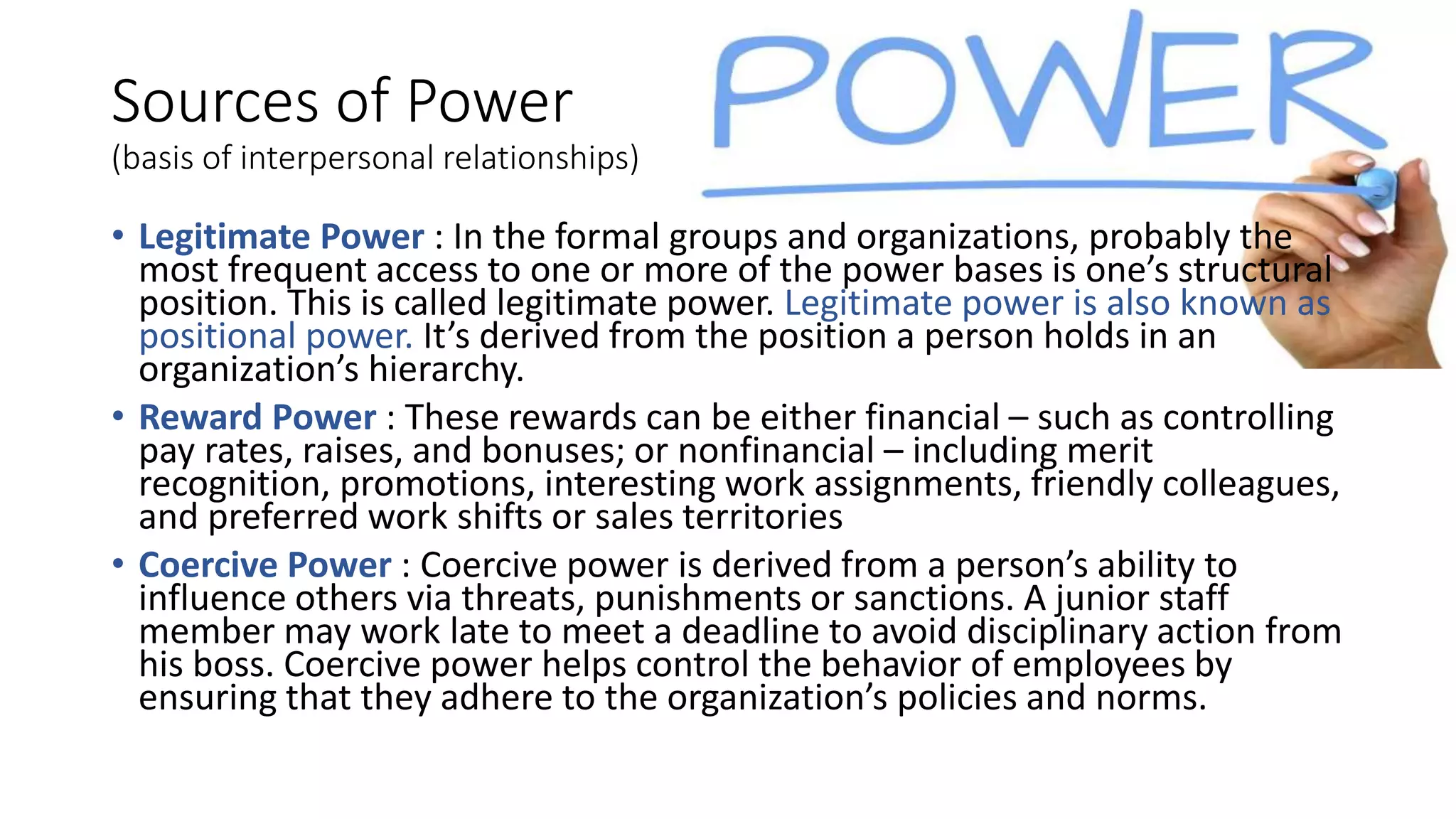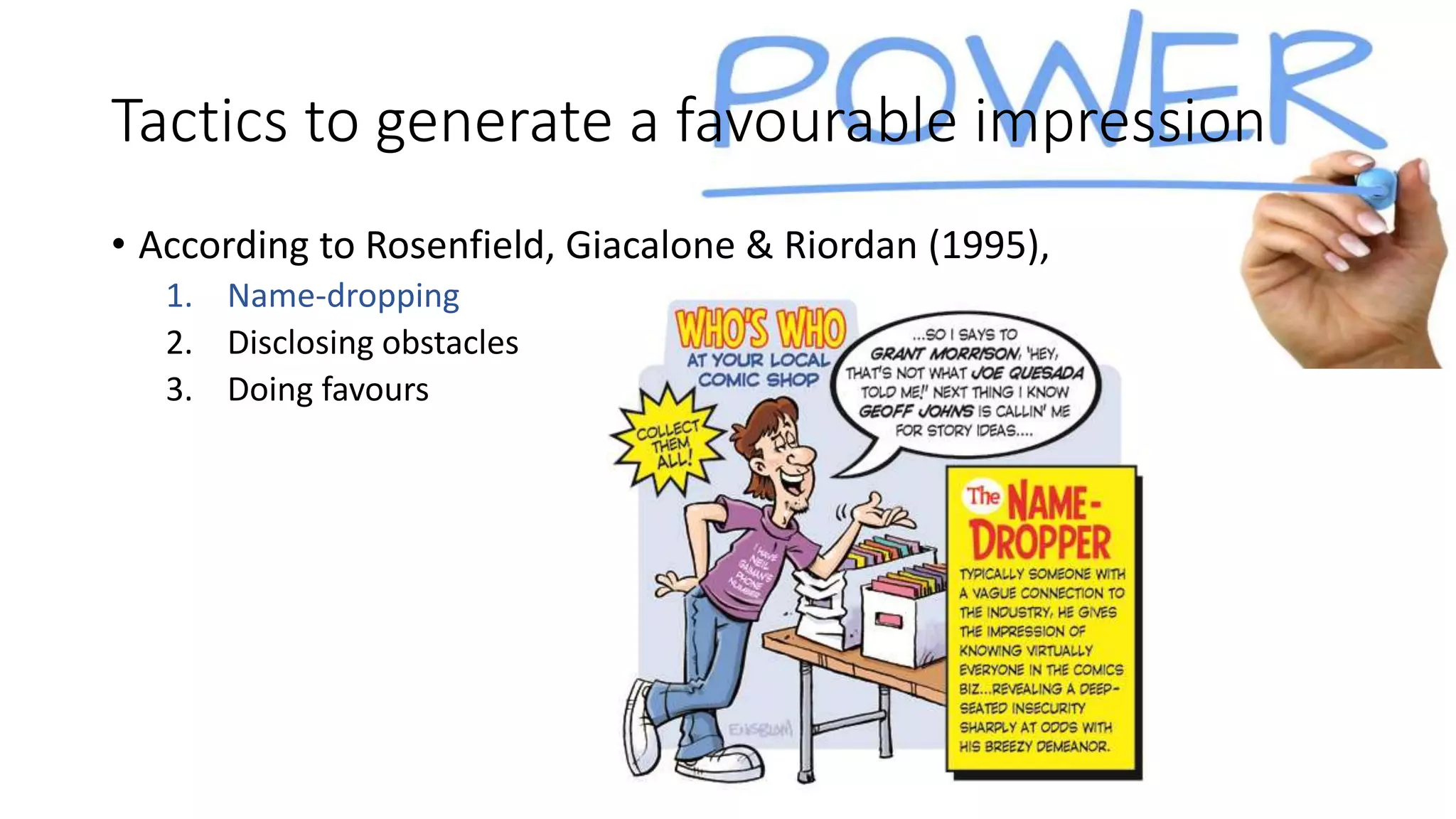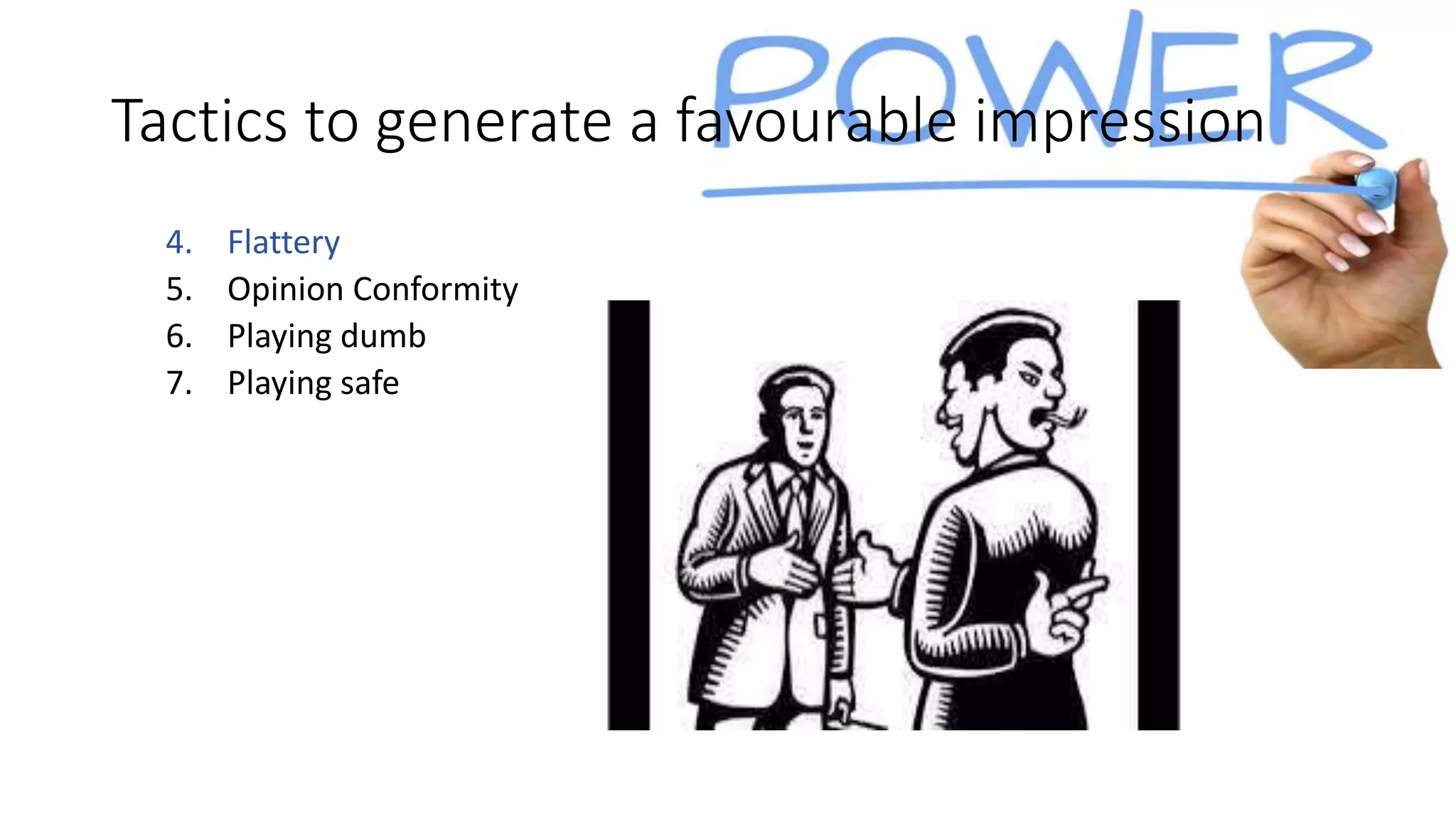The document outlines the concept of power, emphasizing its ability to influence others' behavior and decision-making within an organization. It discusses different sources of power, such as positional, personal, expert, and coercive power, and highlights tactics for obtaining and managing power effectively. Additionally, it addresses impression management techniques to cultivate a favorable image and influence perceptions in a social context.














